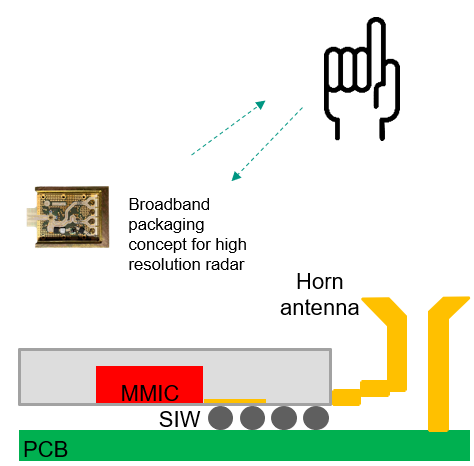Broadband, Low-loss Chip-to-Waveguide Transition for a 140 GHz Hand-Gesture Recognition Radar
- Research field:Antenna and packaging design
- Type:Master/Bachelor
- Time:As soon as possible
- Supervisor:
-
Motivation:
A broadband radar provides a good range resolution, which is necessary for accurate detection of hand gestures. A current project at IHE aims at demonstrating a hand-gesture recognition radar at a high operating frequency of 140 GHz. Integrating the radar MMIC with a waveguide antenna, e.g. a horn antenna will provide a high gain and narrow beamwidth, which will improve the maximum range and suppress undesired interferences, respectively. Therefore, a signal transition between a radar MMIC and a rectangular waveguide is required.
Target:
The radar MMIC is embedded in an eWLB-package (eWLB is a packaging technology from Infineon), which includes a dielectric layer, a metal layer and an array of solder balls. A substrate integrated waveguide (SIW) can be implemented in the eWLB-package. A signal transition should be developed between SIW and a rectangular waveguide, operating at a center frequency of 140 GHz. The student should investigate various methods for maximizing the bandwidth and minimizing the insertion loss of the signal transition.
Equipment for manufacturing and measurement: A prototype of the signal transition can be manufactured and measured in the millimeter-wave laboratory at IHE.
Prerequisites: Antenna fundamentals, CST Microwave Studio.
This thesis can be written in German or English.
Chip to Waveguide Transition - SIW with flip chip bumps.pdf


